new posts in all blogs
Viewing: Blog Posts Tagged with: Mendoza, Most Recent at Top [Help]
Results 1 - 5 of 5
How to use this Page
You are viewing the most recent posts tagged with the words: Mendoza in the JacketFlap blog reader. What is a tag? Think of a tag as a keyword or category label. Tags can both help you find posts on JacketFlap.com as well as provide an easy way for you to "remember" and classify posts for later recall. Try adding a tag yourself by clicking "Add a tag" below a post's header. Scroll down through the list of Recent Posts in the left column and click on a post title that sounds interesting. You can view all posts from a specific blog by clicking the Blog name in the right column, or you can click a 'More Posts from this Blog' link in any individual post.

By: Julia Callaway,
on 7/12/2014
Blog:
OUPblog
(
Login to Add to MyJacketFlap)
JacketFlap tags:
*Featured,
boxing,
British,
mendoza,
Jewish history,
Jewish tradition,
sports history,
Sports & Games,
Daniel Mendoza,
Liz Clarke,
Mendoza the Jew,
Ronald Schechter,
history mendoza,
mendoza’s,
250th birthday,
1765,
1764,
250th anniversary,
circumcised,
Biography,
History,
Add a tag
By Ronald Schechter
This past 5 July was Daniel Mendoza’s 250th birthday. Or was it? Most biographical sources say that Mendoza was born in 1764. The Encyclopedia Britannica, the Encyclopedia Judaica, Chambers Biographical Dictionary, and the Encyclopedia of World Biography all give 1764 for Mendoza’s year of birth, as do the the websites of the International Boxing Hall of Fame, the International Jewish Hall of Fame, WorldCat, and Wikipedia. The blue plaque on the house in Bethnal Green where Mendoza lived states that he was born in 1764. Indeed, Mendoza’s own memoirs claim that he was born on 5 July 1764.
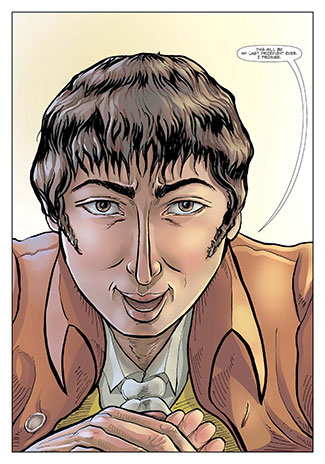
But the records of the Spanish and Portuguese Synagogue at Bevis Marks in London indicate that Mendoza was actually born in 1765. Thanks to the work of Lewis Edwards, who reported his findings in a lecture to the Jewish Historical Society of England in 1938, and whose paper was subsequently published in the Transactions of that society, we know that the Mendoza was circumcised on 12 July 1765, 249 years ago today. Jewish law requires infant boys to be circumcised on the eighth day after birth, and this would suggest a birth date of 4 July 1765. (Edwards writes that “we must take the date of birth to have been 5 July 1765,” but in that case Mendoza would only have been seven days old when he was circumcised, which would have violated Jewish law.) It would be quite a coincidence if another Daniel Mendoza had been born on 4 July 1765, and our Daniel Mendoza, whose family belonged to the same synagogue, had been missing from the circumcision records of the previous year. It is equally unlikely that Mendoza would have been circumcised at the age (almost exactly) of one year. Moreover, Edwards consulted the records of the Grand Lodge of Freemasons and found that “Daniel Mendoza, tobacconist, of Bethnal Green, aged 22,” was initiated into the society at some time between 29 October 1787 and 12 February 1788. We know from his memoirs that Mendoza had worked in a tobacconist’s shop between 1782 and 1787, and letters he wrote to the newspapers in 1788 gave his address as “Paradise-Row, Bethnal Green.” So it is reasonable to assume that the new initiate was Daniel Mendoza the pugilist.
Is it possible that Mendoza was mistaken about his own birth date? This seems unlikely, since if he knew he was 22 in late 1787 or early 1788 when he registered with the Freemasons, he should have known he was born in 1765. A printer’s error is more likely the cause. One can easily imagine a printer, or an apprentice, switching the type and accidently entering his “5” after “July” and placing his “4” after “176,” thereby changing 4 July 1765 to 5 July 1764. Whatever the reason for the error, once it was made it was bound to be repeated. When reporting on Mendoza’s death in September 1836, the Morning Post wrote that the boxer “had reached his 73rd year,” as did Bell’s Life in London and Sporting Chronicle, when in fact he died in his 72nd. And the proliferation of this false information in the years following Mendoza’s death made made it “common knowledge.” Despite Edwards’s careful research, most of the people who have written about Mendoza in the last three quarters of a century have repeated the earlier mistake.
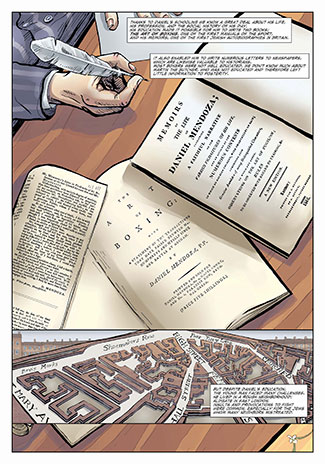 Why does any of this matter? What difference does it make if Mendoza was 21 and not 22 when he defeated Martin the Butcher? Probably not much. Am I being pedantic by trying to determine the exact date of Mendoza’s birth? Not entirely. If historians are less than rigorous with details that “don’t matter,” we are likely to be lax when they do matter. Moreover, there is a case to be made that Mendoza’s birth year does matter. After all, we are dealing with a commemoration. The bicentennary of the French Revolution was commemorated in 1989, and any attempt to move it up to 1988 would have been seen as misguided. Similarly, Americans would have balked at the suggestion that they celebrate the bicentennial of the Declaration of Independence in 1975 rather than 1976. The birth of a famous boxer is in a different category of world-historical importance, to be sure, but commemoration is commemoration, and it obeys certain rules. Centuries and half-centuries are more important than decades, which take precedence over individual years. How would you feel if you went to celebrate your grandmother’s 100th birthday only to find out when you arrived at the party that she was 99 (and that her birthday was the previous day)? You would wish her well, but somehow it wouldn’t be the same.
Why does any of this matter? What difference does it make if Mendoza was 21 and not 22 when he defeated Martin the Butcher? Probably not much. Am I being pedantic by trying to determine the exact date of Mendoza’s birth? Not entirely. If historians are less than rigorous with details that “don’t matter,” we are likely to be lax when they do matter. Moreover, there is a case to be made that Mendoza’s birth year does matter. After all, we are dealing with a commemoration. The bicentennary of the French Revolution was commemorated in 1989, and any attempt to move it up to 1988 would have been seen as misguided. Similarly, Americans would have balked at the suggestion that they celebrate the bicentennial of the Declaration of Independence in 1975 rather than 1976. The birth of a famous boxer is in a different category of world-historical importance, to be sure, but commemoration is commemoration, and it obeys certain rules. Centuries and half-centuries are more important than decades, which take precedence over individual years. How would you feel if you went to celebrate your grandmother’s 100th birthday only to find out when you arrived at the party that she was 99 (and that her birthday was the previous day)? You would wish her well, but somehow it wouldn’t be the same.
So let’s find some fitting way to celebrate the 250th anniversary of Mendoza’s birth, but let’s do it next year, and on the 4th of July.
Ronald Schechter is Associate Professor of History at the College of William and Mary. He is the author of Obstinate Hebrews: Representations of Jews in France, 1715-1815 (Berkeley: University of California Press, 2003) and translator of Nathan the Wise by Gotthold Ephraim Lessing with Related Documents (Boston and New York: St. Martin’s Press, 2004). He is author of the graphic history Mendoza the Jew: Boxing, Manliness, and Nationalism, illustrated by Liz Clarke. His research interests include Jewish, French, British, and German history with a focus on the eighteenth and nineteenth centuries.
Subscribe to the OUPblog via email or RSS.
Subscribe to only history articles on the OUPblog via email or RSS.
Images from Mendoza the Jew: Boxing, Manliness, and Nationalism, illustrated by Liz Clarke. Do not use without permission.
The post Daniel Mendoza: born on the 4th of July (249 years ago) appeared first on OUPblog.


By: Julia Callaway,
on 4/29/2014
Blog:
OUPblog
(
Login to Add to MyJacketFlap)
JacketFlap tags:
Books,
illustration,
sport,
History,
Biography,
fonts,
artwork,
boxing,
British,
clarke,
mendoza,
esther,
*Featured,
Art & Architecture,
graphic history,
abina,
OUP USA HE,
Daniel Mendoza,
Liz Clarke,
Mendoza the Jew,
Ronald Schechter,
humphries,
Add a tag
By Liz Clarke
The illustration of a graphic history begins with the author’s script. There are two aspects to turning that script into artwork. It’s both a story, calling for decisions to be made about the best way to present the narrative visually, and a history, rooted in fact and raising questions about what the places and people (and their furniture and transportation and utensils) would actually have looked like.

A sketch of Esther Mendoza, wife of Daniel Mendoza. Courtesy of Liz Clarke. Used with permission.
It’s unlikely that we’ll find perfect answers to all of these questions, particularly in a pre-photography age like the late 18th century, when Daniel Mendoza was at the height of his boxing career. Some subjects offer a wealth of images. Some, like a number of the places Mendoza frequented in London, still exist today. I was able to work from current photographs of locations including Mendoza’s house in Paradise Row, the cemetery where he is buried, and the exterior of the White Hart Inn. We had several images of Mendoza himself to refer to, thanks to his celebrity status. We knew what he looked like at different points in his life, how tall he was and how much he weighed. We knew about his fighting style from newspaper reports, artwork, and from his own instructional writing.
However, other subjects may not have been recorded in an image or even in a written description at the time. If records were made, they may not have survived. This means we have to cast the net wider. There are many sources of general information available that allow a lateral approach — records of people and places with shared characteristics, surviving artefacts and garments, artwork and documents from the time. There was nothing definite to work from in the case of Mendoza’s wife Esther, but we could ask what a woman like Mendoza’s wife would have looked like. How would a woman similar in age, class, and religion to Esther have dressed and worn her hair? We could then blend fact and imagination to arrive at a concept sketch of Esther, which allowed us to agree on how we would depict her.
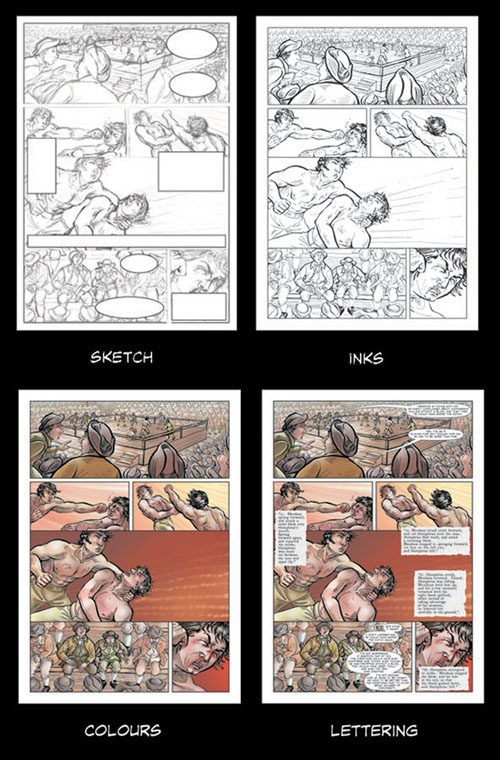
A page from Mendoza the Jew, showing the process from the sketch stage to the final piece. Courtesy of Liz Clarke. Used with permission.
Once we have enough information, each page is planned in detail. I’ll decide on the composition of the whole page, and of the contents of each panel on the page. There are choices to make about viewpoint (for example, if the scene is going to be presented from a low angle, looking up at it, or a high angle, looking down on it, which creates two very different effects), how to draw attention to the pivotal point in the scene, the characters’ body language and expressions, if they aren’t already defined by the script, and how to convey the themes of the book. This layout sketch is the most important stage in the illustration of a page.
Once the author has approved the sketch, I draw it in ink as line art and prepare this to be coloured digitally. Colour and the nature and direction of the light can also contribute to the storytelling. For example, the desaturated colours at the beginning of an exchange between Mendoza and Humphries, when Mendoza is not at his best, gradually become brighter and warmer by the end of the scene, as their verbal sparring restores Mendoza’s fighting spirit. The text comprising the narrative and dialogue is added to the art, and text boxes and speech bubbles are fitted to it. For Mendoza the Jew, we decided to use three different fonts. Two fonts with some resemblance to typefaces from the time period represented quotes from Mendoza’s autobiography and from a newspaper report of Mendoza’s match against Humphries in Doncaster, distinguishing the author’s words from Mendoza’s, and those of the reporter.
As an artist, illustrating a graphic history, as opposed to a work of fiction, has some unique rewards as well as challenges. There’s an awareness that these were real individuals and events, and it always feels like a privilege to be telling their stories.
Liz Clarke is an illustrator based in Cape Town, South Africa. Her artwork has appeared in magazines, games and books, including Abina and the Important Men: A Graphic History by Trevor R. Getz and Mendoza the Jew, Boxing, Manliness, and Nationalism: A Graphic History by Ronald Schechter.
Subscribe to the OUPblog via email or RSS.
Subscribe to only history articles on the OUPblog via email or RSS.
The post Illustrating a graphic history: Mendoza the Jew appeared first on OUPblog.


By: Alice,
on 2/2/2012
Blog:
OUPblog
(
Login to Add to MyJacketFlap)
JacketFlap tags:
inca,
This Day in History,
Buenos Aires,
argentina,
Latin America,
mendoza,
*Featured,
higher education,
this day in world history,
Pedro de Mendoza,
aire—buenos,
aires,
buenos,
asunción,
1536,
spaniards,
Add a tag
This Day in World History
February 2, 1536
Buenos Aires First Founded
 On February 2, 1536, Spanish explorer Pedro de Mendoza founded the city he named Nuestra Señora Santa María del Buen Aire—Buenos Aires, Argentina. The new town was meant to spearhead the Spanish effort to colonize the interior of South America. It came less than two years after conquistadors had returned to Spain from Peru with treasures seized from the Inca empire.
On February 2, 1536, Spanish explorer Pedro de Mendoza founded the city he named Nuestra Señora Santa María del Buen Aire—Buenos Aires, Argentina. The new town was meant to spearhead the Spanish effort to colonize the interior of South America. It came less than two years after conquistadors had returned to Spain from Peru with treasures seized from the Inca empire.
Spain’s Charles I was spurred by the vast Inca wealth to seek further riches in South America. He also wanted to block any effort by Portugal to expand its foothold in Brazil. Accordingly, he commissioned Mendoza to mount an expedition to explore and settle the Río de la Plata, a vast estuary in southern South America that had been sighted back in 1516.
Mendoza set out in August 1535 in command of 800 to 1700 men (accounts vary) in around a dozen ships. The expedition — the largest sent from Spain to the Americas to date — was ill fated, however. A fierce storm blew the ships off course, and after regrouping Mendoza decided that one of his lieutenants was a rebel and had him executed. Troubles continued after the founding of Buenos Aires. At first the Spaniards received gifts of food from the indigenous locals but soon after fighting broke out between the two groups. That conflict cut off the chief source of food, and the Spaniards began to starve. Mendoza sent a lieutenant upriver in search of a friendlier site. He founded Asunción, now the capital of Paraguay.
Mendoza himself headed back to Spain in 1537. He was seriously ill — perhaps from syphilis — and died on the return trip. His settlement continued to struggle, and in 1541 the remaining colonists abandoned it, heading for Asunción. Not until 1580, when Juan de Garay returned to the scene, was a permanent Spanish presence established at Buenos Aires.
“This Day in World History” is brought to you by USA Higher Education.
You can subscribe to these posts via RSS or receive them by email.



By: Kirsty,
on 11/9/2010
Blog:
OUPblog
(
Login to Add to MyJacketFlap)
JacketFlap tags:
Current Events,
london,
anniversary,
Online Resources,
monopoly,
Early Bird,
odnb,
mendoza,
*Featured,
philip carter,
75th,
worldwide—leaving,
visiting’,
jarrin,
pentonville,
History,
Reference,
UK,
Add a tag
By Philip Carter
This month is the 75th anniversary of the London version of the popular board game, Monopoly. To mark the anniversary, editors at the Oxford DNB wondered what a historical version of the game might look like. The Oxford DNB includes the stories of more than 57,000 men and women from British history, of whom nearly half had ties to the capital city.
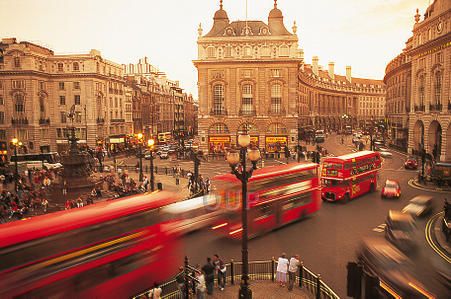
So who would you have met if you’d made your way around a Monopoly board in the 1400 years since Mellitus (d.624), our first definite capital dweller and, incidentally, the first ever bishop of London? Throw a 3 and you’re rubbing shoulders with pugilist Daniel Mendoza on the Whitechapel Road, while a 10 has you ‘just visiting’ a London jail, alongside Elizabeth Fry. (Perhaps you’re there to see Dr Crippen, who spent his last days in Pentonville prison before his execution 100 years this month.) Another 3 gets you to the more salubrious Whitehall (the ODNB has articles on over 1700 civil servants); an 11 sees you on the Strand, developed for real by the 17th-century property tycoon Nicholas Barbon after the Great Fire. Shake a 7 and it’s the Water Works (how about Hugh Myddelton?) Follow this with a 6 and you can browse in Bond Street, perhaps stopping at no. 123, where the Italian confectioner William Jarrin set up shop in 1822. Posh Park Lane (126 residents) and swanky Mayfair (232) beckon, not to mention £200 on passing ‘Go’. But, oh no! a 4 and it’s ‘Super Tax, Pay £100’: welcome to the ODNB’s 54 accountants.
If you’d like to play on, you can. Online you can search the Oxford DNB by city, town, and street, as well as profession.
Dr Philip Carter is Publication Editor of the Oxford Dictionary of National Biography. In the UK the ODNB is available free via nearly all public libraries and you can log-in at home by adding your library card number here. The ODNB is also available in libraries worldwide—leaving you a little bit more for that hotel on the Old Kent Road.

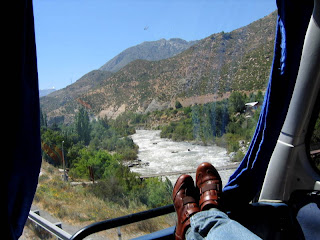
Bill and I went to Mendoza, Argentina this last weekend. Mendoza is the center of the wine region of Argentina, a town of around 100,000 people. Coming into it, I thought of Albuquerque, New Mexico. The whole area on the other side of the Andes as we came from Chile reminded me of the southwest.
Mendoza was very warm, a bit humid, but absolutely lovely with tree lined streets, good food (yes the steaks ARE good, but be sure to say you don't want it well done if you prefer it that way), and it's famous for being a shopper's paradise. The stores were stocked with yerba mate cups which resemble honey pots with silver straws that strain the herbs as you drink the tea. Beautiful reasonably priced leather goods are everywhere, as well as artisan stands in several areas around the main part of town. Women used fans as they walked along the streets at night, and everyone seemed well dressed. I had a bit of a fashion melt down in my denim shorts, golf shirt, anklets and tennis shoes, but I got over it.
At dinner, we were approached by several people for money, something I'm slowly getting used to. We've been approached for the same thing in Santiago, but not quite so often. There are times when they just stand there after you say no. More often, though, they put cards . . . small calendars, saints, etc. on your table and then come around to collect money, no hassle if you don't want to buy anything. We got two Gemini cards from one young girl who wasn't older than ten or eleven.
Going over the Andes was incredible . . . you need to do this. They're similar to the Sierras as they were formed by the coastal plate lifting up the contenintal plate. One passes fairly quickly through the foothills and the mountains rise very fast. No trees though except in some of the valleys. Plenty of waterfalls. We were able to sit in the front of the double decker bus on the way to Argentina and had a huge window to look out of. The bus driver was crazy, passing on curves. My husband has posted a video of what it was like on his blog. Click on Travels beneath Good Links, then go to the Transportation in Chile posting. Scroll down to the third video. (If you want to know what it's like to ride the micro (public transit buses), check out the second video.
On our way back, just before we got to customs (eat your cheese before trying to enter either country) and not ten minutes after passing Mt. Aconcagua, the highest mountain in the western hemisphere, I saw a glimpse of a condor. I thought at first it was a hang glider, and then realized what it had to be. The split second made me realize how huge these birds are. He flew so that people on the other side of the bus got a better look.
Now for the unpleasant news. Right outside of Santiago, five boys (don't know their age as I didn't see them) threw rocks at the bus. One of them hit the window across the aisle from us. Fortunately the woman sitting there saw them and ducked. Glass (safety glass) sprayed everywhere. I felt a small piece whiz by my face (I ducked as well and covered my eyes). No one was hurt, thank goodness, but it was scary. Evidently this section of the road has had problems like this . . . but so does Los Angeles, unfortunately.
Anyway, I'll let the pictures do the talking now:


 Why does any of this matter? What difference does it make if Mendoza was 21 and not 22 when he defeated Martin the Butcher? Probably not much. Am I being pedantic by trying to determine the exact date of Mendoza’s birth? Not entirely. If historians are less than rigorous with details that “don’t matter,” we are likely to be lax when they do matter. Moreover, there is a case to be made that Mendoza’s birth year does matter. After all, we are dealing with a commemoration. The bicentennary of the French Revolution was commemorated in 1989, and any attempt to move it up to 1988 would have been seen as misguided. Similarly, Americans would have balked at the suggestion that they celebrate the bicentennial of the Declaration of Independence in 1975 rather than 1976. The birth of a famous boxer is in a different category of world-historical importance, to be sure, but commemoration is commemoration, and it obeys certain rules. Centuries and half-centuries are more important than decades, which take precedence over individual years. How would you feel if you went to celebrate your grandmother’s 100th birthday only to find out when you arrived at the party that she was 99 (and that her birthday was the previous day)? You would wish her well, but somehow it wouldn’t be the same.
Why does any of this matter? What difference does it make if Mendoza was 21 and not 22 when he defeated Martin the Butcher? Probably not much. Am I being pedantic by trying to determine the exact date of Mendoza’s birth? Not entirely. If historians are less than rigorous with details that “don’t matter,” we are likely to be lax when they do matter. Moreover, there is a case to be made that Mendoza’s birth year does matter. After all, we are dealing with a commemoration. The bicentennary of the French Revolution was commemorated in 1989, and any attempt to move it up to 1988 would have been seen as misguided. Similarly, Americans would have balked at the suggestion that they celebrate the bicentennial of the Declaration of Independence in 1975 rather than 1976. The birth of a famous boxer is in a different category of world-historical importance, to be sure, but commemoration is commemoration, and it obeys certain rules. Centuries and half-centuries are more important than decades, which take precedence over individual years. How would you feel if you went to celebrate your grandmother’s 100th birthday only to find out when you arrived at the party that she was 99 (and that her birthday was the previous day)? You would wish her well, but somehow it wouldn’t be the same.







That tree lined street is gorgeous. Reminds me of Davis.